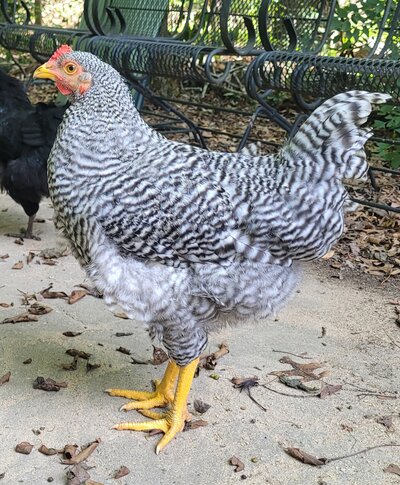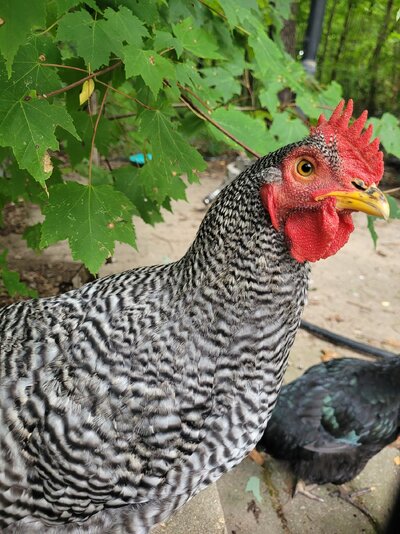I want to raise my own chicks once I get the breeds I want in my flock.This time I ordered some more barred rocks and a couple legbarsYou can do that but only IF they are not crosses. Since a BR male always contributes one of his two barring genes to his progeny (two barring genes makes the white bars more prominent, therefore he is lighter overall), all chicks will have barring with that sire, even if it's subtle such as when the mom is a non-barred breed-those may have very ghosty barring like that pea combed one (wonder where that came from with no pea combs listed in the parentage).
If the mother is the BR and the sire is a red or gold color like a Buff Orp or RIR, then the pullets wil have no barring because the dad was not barred and mom cannot contribute barring to a daughter. Crosses can get so darn tricky! Out of a mix of males and females, some with barring and some not, you can of course, get pure barred chicks and crosses. With that mixed bag, you can get all sorts of combinations and variations, making it much more difficult to make a decisive call on the sex early on. I've had some puzzles mixing splash birds and buff birds in my small flock of bantam Cochins.
Lines do vary. I have had better luck overall sexing hatchery Rocks than some exhibition type BRs, mainly because of the dark wash down the legs being much more definitive on the hatchery pullets than the others. Vice versa, the exhibition male chicks often have some dark wash as well. But some are just not as easy as others in the same group from the same source.
Sexing is more an art than a science and there are three traits at hatch that we use to make educated guesses, as you know. For those who don't know, it's the character of the head spot, plus the color of the leg fronts plus the darkness of the down as soon as they're fully fluffy (black-black or faded black) I've made a few sexing mistakes, very few but definitely four or five times, even knowing what to look for and having raised BRs for over 20 years, both hatchery in the beginning, and later, BRs from three different exhibition breeder lines. When you have such a variety of parent choices in the same flock, it can get very tricky until they grow a few weeks. The very best sexing method in that case is the "wait and see" method, LOL
Navigation
Install the app
How to install the app on iOS
Follow along with the video below to see how to install our site as a web app on your home screen.
Note: This feature may not be available in some browsers.
More options
You are using an out of date browser. It may not display this or other websites correctly.
You should upgrade or use an alternative browser.
You should upgrade or use an alternative browser.
Plymouth Barred Rock hen or roo?
- Thread starter ChickenMamaRNx6
- Start date
- Thread starter
- #32
ChickenMamaRNx6
In the Brooder
- Apr 30, 2025
- 17
- 17
- 34
- Thread starter
- #33
ChickenMamaRNx6
In the Brooder
- Apr 30, 2025
- 17
- 17
- 34
LuciferRoo
Songster
Wow. I'm no expert but this is surprising.
Those two in the original chick photos looked like males to me, but, and this is the surprising part, the adult birds look female.
Those two in the original chick photos looked like males to me, but, and this is the surprising part, the adult birds look female.
New posts New threads Active threads
-
Threads with more replies in the last 15 days
-
Heater or heat panel -10
- Started by IowaCHKN
- Replies: 154
-
-
-
-
-
×



